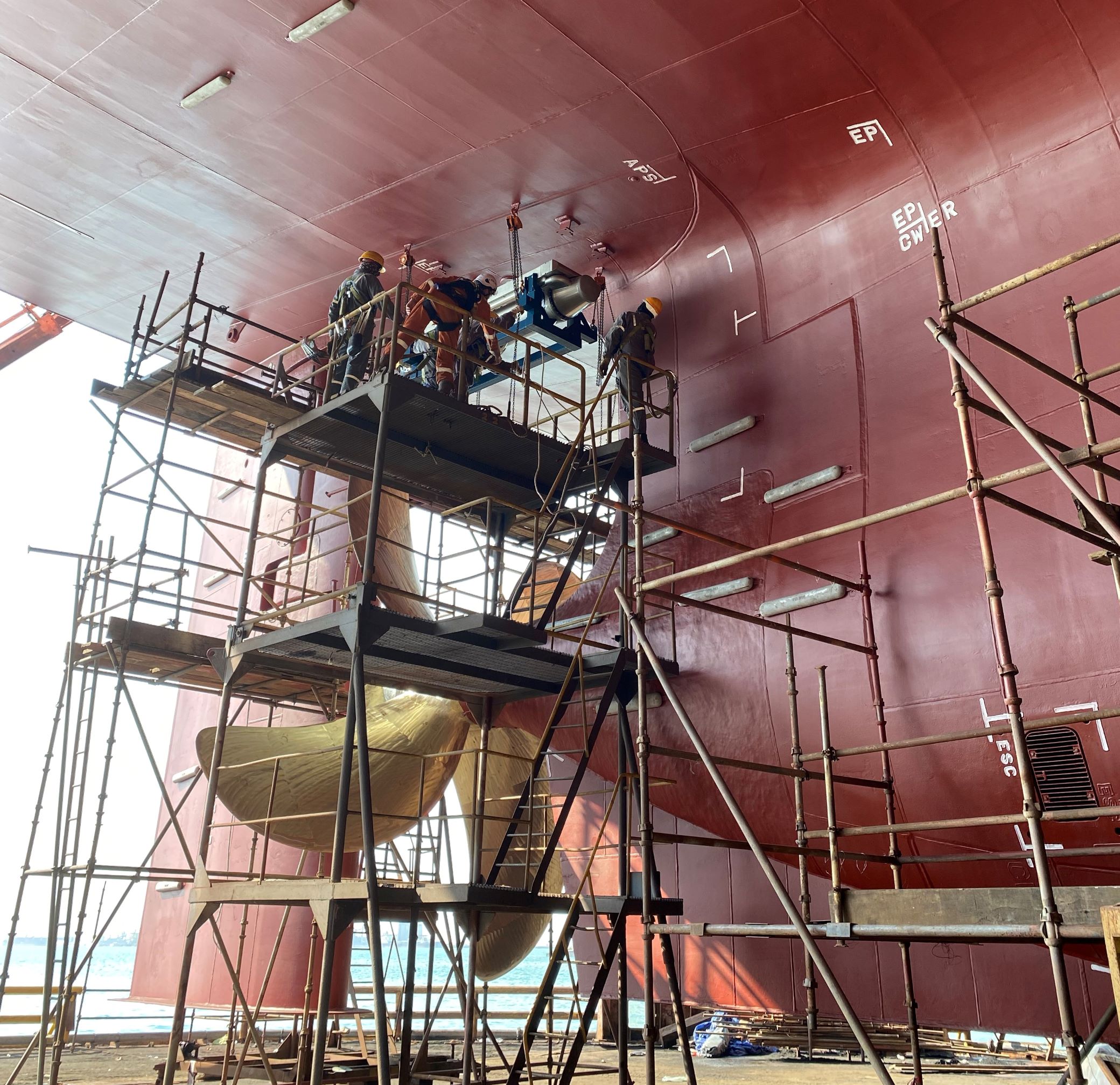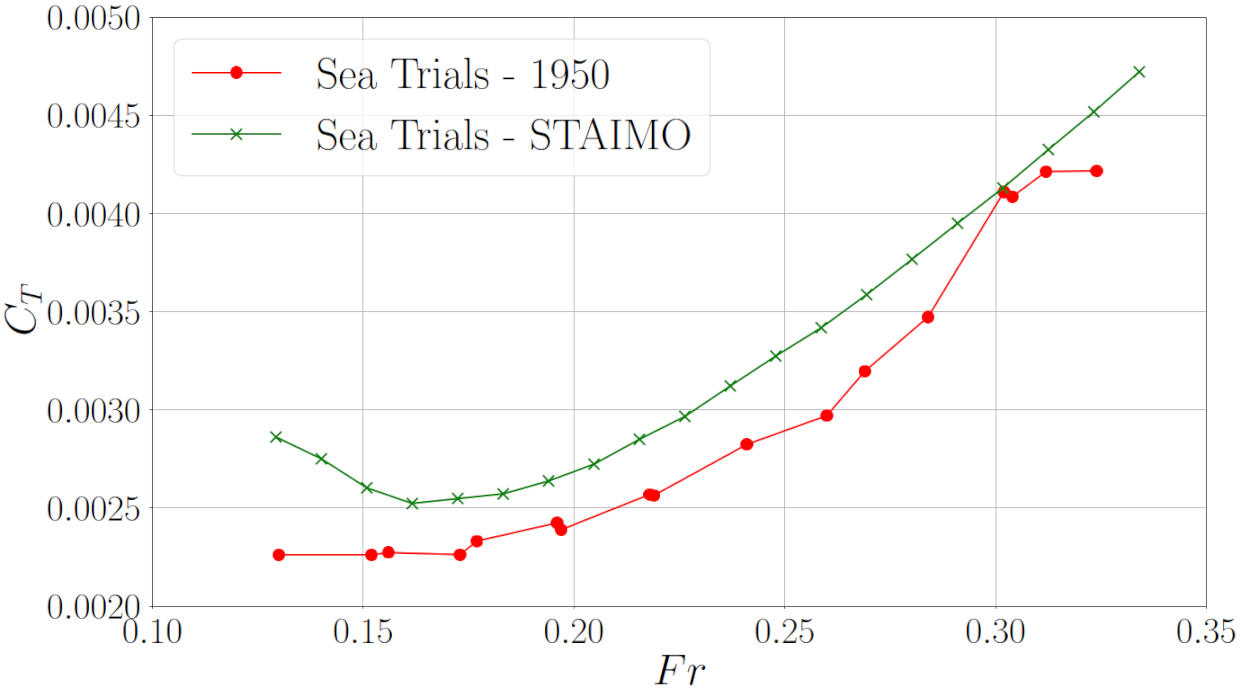Join us and unlock access to personalized features, exclusive content, and more. Fill in the details below to get started.
Episode 9. A journey to PIV flow measurements at ship scale.
The installation of the unit on a vessel requires significant engagement with the shipowner. We were very lucky to work together with Stena Bulk on this project. Their commitment, attention to detail, support and encouragement were enormous!
So, when the vessel was in the dry-docking, the feedthrough flange was welded in the hull. Four lifting eyes were also welded to the shell plate in the area of the future PIV unit. After that, the dummy frame (which has the same dimensions as the actual PIV unit) was lifted and the dummy feedthrough pipe was attached to the feedthrough flange. This gave the required alignment of the entire frame. While the frame was held by chain blocks, the next step was to weld brackets onto which the PIV unit will be fixed in the correct locations indicated by the dummy frame. Then the frame was bolted to the bracket to check the alignment of the entire structure. The next step was to remove the dummy frame to allow the painting of the newly installed feedthrough flange, brackets and lifting eyes. When the area was painted and the paint was dry (on the last day of dry-docking) the PIV unit was lifted by chain blocks and bolted to the brackets. The final operation of that day was a pressure test to ensure the water-tightness of the entire structure.
To be continued…
 PIV unit installation in the dry dock
PIV unit installation in the dry dock


